How IoT Calibration Improves Pest Monitoring Accuracy
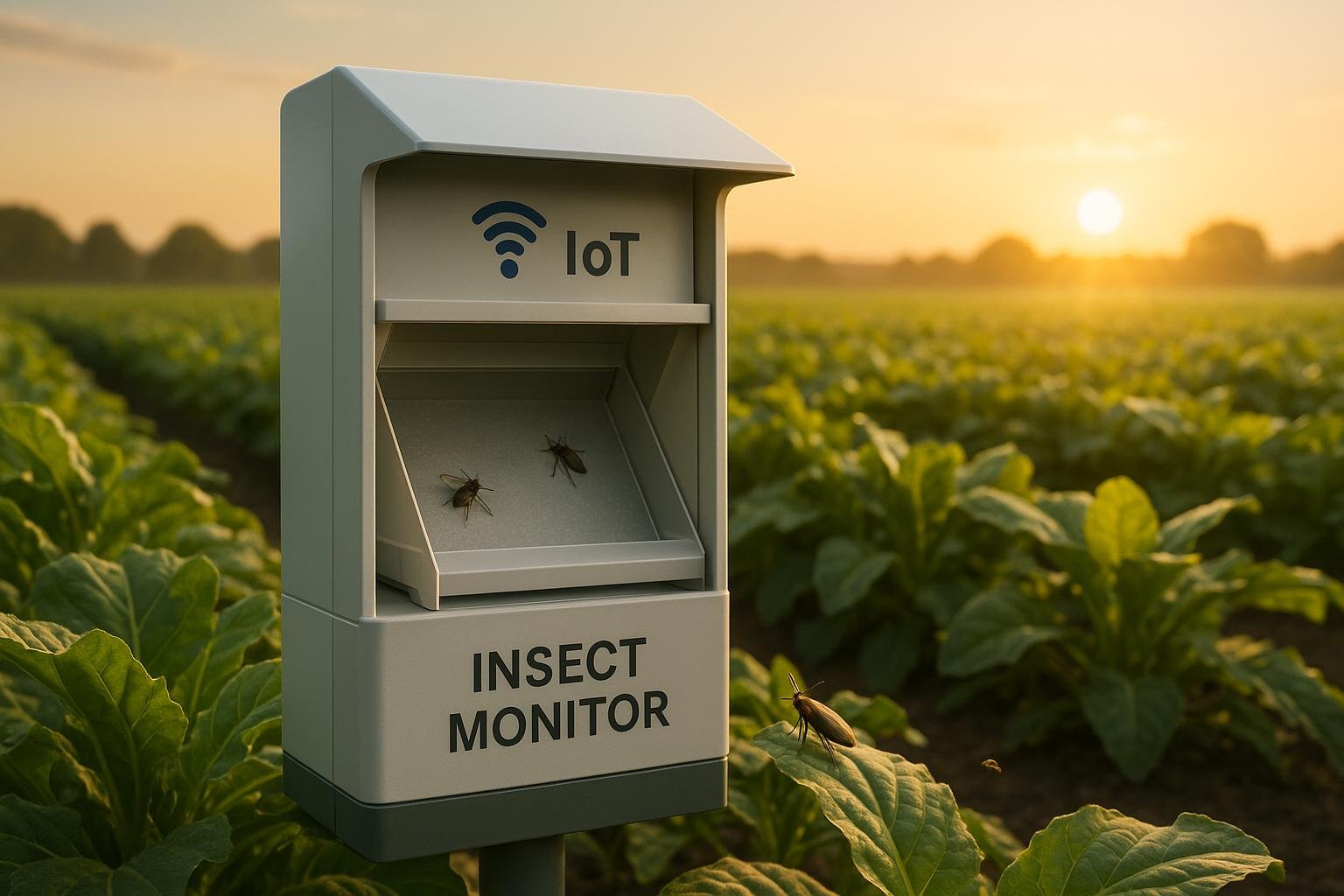
IoT calibration is changing pest monitoring by ensuring sensors collect precise data, which is key for accurate pest detection. This reduces errors, like false positives or negatives, and helps manage pests efficiently. Calibrated systems outperform uncalibrated ones in detection accuracy, long-term reliability, and cost-effectiveness. While they require higher upfront investment and regular maintenance, the benefits - such as improved pest control and reduced pesticide use - far outweigh the downsides.
Key Takeaways:
- Calibrated Systems: Over 95% detection accuracy, reduced pesticide use, higher upfront cost, but long-term savings.
- Uncalibrated Systems: Around 72% detection accuracy, cheaper initially, but higher long-term costs due to inefficiencies.
For precision and long-term value, calibrated IoT systems are the smarter choice for pest monitoring.
Tithonus: Real-Time Smart Pest Monitoring Detection System for Urban Farming with Farmbot & YOLOv5

1. Calibrated IoT Pest Monitoring Systems
Calibrated IoT pest monitoring systems play a critical role in modern pest management by ensuring their sensors collect accurate and dependable data. This data forms the backbone of effective pest control strategies.
Detection Accuracy
When paired with advanced deep learning algorithms, calibrated camera and microphone sensors can achieve impressive insect detection rates, ranging from 70% to 98% [1]. For example, researchers at Baiyi Agricultural University tested a system using 2,367 pest images to replicate real-world overlapping pest scenarios. By combining EfficientNetv2-S with an Adaptive Feature Pyramid Network (AFPN), the system achieved a 95.72% detection accuracy and a 94.04% mean Average Precision (mAP) [3].
Key to this accuracy is the calibration process, which involves using checkerboard plates for geometric corrections and hand–eye calibration to align sensor data with mechanical coordinate systems. This ensures precise data collection and reduces the likelihood of errors [3].
False Positive/Negative Rates
One of the standout features of calibrated systems is their ability to minimize false readings, which can either lead to unnecessary treatments or allow infestations to go unnoticed. In one study, a system incorporating a Squeeze-and-Excitation (SE) attention module and an α-CIoU loss function achieved 91.30% precision on field images [3]. Additionally, field tests with a three-axis separation device showed a 92.41% success rate on the first attempt and a 98.12% success rate after three attempts, with a reprojection RMS error of just 0.18 pixels [3].
Maintenance Requirements
While these systems demand upfront calibration for long-term accuracy, this process requires technical expertise and specialized equipment [2]. Though the initial setup may seem complex, the investment pays off by ensuring consistent performance and reducing the need for frequent recalibrations. This reliability highlights the importance of proper maintenance for sustained accuracy [1].
Cost Over Time
Calibrated systems may have higher initial costs, but their long-term savings and precision make them a worthwhile investment. For example, research on monitoring spruce budworm infestations in Maine found that Sentinel-2 imagery was the most cost-effective solution, with costs ranging from $33 to $63 per square kilometer over a 10-year period [5].
"Our research highlights the importance of adaptive monitoring strategies and integrating remote sensing for forest pest detection." – Allison Foster, Parinaz Rahimzadeh-Bajgiran, Adam Daigneault, Aaron Weiskittel [5]
Labor costs also show significant variation. Remote sensing methods can reduce labor expenses to just 30% of total costs, compared to up to 80% for traditional field sampling [4]. In another study, using Landsat imagery to guide post-wildfire responses instead of helicopter monitoring cut costs by more than 75%, saving $35 million over five years [4].
2. Uncalibrated IoT Pest Monitoring Systems
Uncalibrated IoT pest monitoring systems operate without adhering to proper standardization protocols, leading to inconsistent data collection. While these systems might seem appealing due to their lower upfront costs, they often result in significant long-term expenses. These costs arise from performance limitations that make effective pest management much harder to achieve.
Detection Accuracy
The accuracy of pest detection heavily depends on the quality of sensor data. Without proper calibration, IoT pest monitoring systems often deliver inconsistent results. AI models, which rely on clear and precise data, perform poorly when fed inconsistent inputs. For example, one AI model achieved over 95% accuracy under controlled conditions, but similar models saw their accuracy drop to around 72% due to data inconsistencies [1].
Several factors make uncalibrated systems prone to errors. Issues like the position of insects, overlapping instances, limited data, and similarities between species can confuse the system. This often leads to misidentification of pests, which disrupts monitoring efforts and increases error rates [6].
False Positive/Negative Rates
Uncalibrated systems are especially prone to generating false positives and false negatives. This creates two major problems: unnecessary pesticide applications and missed infestations. Inaccurate data from uncalibrated sensors impacts the reliability of even advanced AI models. For instance, deep learning algorithms that typically achieve detection rates between 70% and 98% under optimal conditions see a significant drop in performance when working with flawed data [1].
Maintenance Challenges
Without regular calibration, these systems tend to produce increasingly inaccurate data over time. This makes troubleshooting and correcting sensor drift in remote setups far more difficult. The absence of standardized calibration processes complicates efforts to identify and address data quality issues, leading to higher maintenance demands [7]. These ongoing challenges contribute to the rising costs of using uncalibrated systems.
Cost Over Time
While uncalibrated systems may save money initially, they often lead to hidden costs that accumulate over time. Increased pesticide use, crop damage, and the development of pesticide resistance are just a few of the issues that arise from inaccurate pest monitoring [1]. False positives can lead to unnecessary pesticide applications, wasting money and harming the environment. Meanwhile, false negatives allow pests to spread unchecked, increasing the risk of crop damage and fostering resistance to pesticides. This combination of inefficiencies ultimately makes uncalibrated systems far more expensive in the long run.
sbb-itb-4d6a8dd
🚀 Ready to Reinvent Your Garden?
Join thousands of homeowners who have transformed their gardens using our AI design tool. Upload one photo to explore endless possibilities.
Get your AI garden designs →Advantages and Disadvantages
Choosing between calibrated and uncalibrated IoT pest monitoring systems is a balancing act. Each option comes with its own set of strengths and weaknesses, affecting both costs and long-term results. Below, we break down these systems to help gardeners make informed decisions about their pest management strategies.
Calibrated Systems: Precision at Its Best
Calibrated IoT systems excel in one key area: accuracy. Their high detection precision helps reduce unnecessary pesticide use, promoting more sustainable gardening practices.
The environmental impact is a major plus. Take AI-powered smart sprayers, for instance - they can cut herbicide use by up to 90% compared to traditional methods [8]. One standout example is Blue River Technology's smart sprayer, which uses image-based pattern recognition to identify and spray only weeds, sparing crops. Another is Semios, which teamed up with Google to create a precision farming platform. This platform helped almond farmers increase yields by reducing a moth population by 1.5 billion using AI [8].
Calibrated systems also enable proactive pest management. For example, cotton farmers have combined AI-based pest detection with pheromone traps to precisely target bollworm infestations. This approach minimizes over-spraying while maximizing effectiveness. However, these systems come with a trade-off: higher upfront costs and the need for regular recalibration [9].
Uncalibrated Systems: The Risk of Cutting Corners
Uncalibrated systems might seem like a bargain at first glance. They’re cheaper to buy and require little maintenance, making them attractive to gardeners on a tight budget. But these savings often don’t hold up over time.
Why? Because their detection accuracy drops significantly - from over 95% in calibrated systems to around 72% [1]. This lack of precision leads to two major issues: false positives that waste pesticides and false negatives that let infestations grow unchecked. Both problems can drive up costs in the long run [9].
Comparative Overview
| Feature | Calibrated IoT Systems | Uncalibrated IoT Systems |
|---|---|---|
| Initial Cost | Higher investment required | Lower upfront costs |
| Detection Accuracy | Over 95% under optimal conditions | Around 72% due to inconsistent data |
| Maintenance | Requires periodic recalibration | Minimal maintenance required |
| Pesticide Reduction | Up to 90% reduction possible | Often leads to increased usage |
| Long-term Reliability | Maintains high accuracy over time | Accuracy declines without calibration |
| Pest Management | Proactive and targeted approach | Reactive and less precise |
| Total Cost of Ownership | Lower due to effective pest control | Higher due to inefficiencies |
This comparison highlights the clear benefits of calibration. While uncalibrated systems may save money upfront, calibrated systems deliver superior accuracy and long-term cost savings. The right choice depends on your priorities, but if precision and sustainability are your goals, calibrated systems are the way to go.
Conclusion
The analysis makes one thing clear: calibration is the cornerstone of accurate pest monitoring. The calibration techniques outlined earlier show how calibrated IoT systems significantly outperform their uncalibrated counterparts, bringing a new level of precision to garden management.
These systems offer real, measurable advantages. For example, IoT-enabled approaches can enhance precision agriculture accuracy by up to 95% [10] and cut herbicide use by as much as 90% [8]. Predictive maintenance features can boost productivity by 25% while reducing equipment breakdowns by up to 70% [13]. Instead of reacting to pest problems after they occur, calibrated IoT systems identify and predict infestations early, allowing for intervention before they escalate [14]. This proactive approach not only addresses immediate challenges but also strengthens your garden’s defenses over time.
To make the most of these systems, start with the right technology. Choose IoT tools that match your garden’s size, pest challenges, and software needs [14]. Keep sensors calibrated on a regular schedule to ensure accurate data, and use analytics to spot any deviations from ideal conditions [11]. Train system managers thoroughly and set clear protocols for responding to alerts and insights [14]. Don’t overlook the importance of regular firmware updates and maintaining a strong network connection [12].
The decision ultimately depends on your priorities. If precision, sustainability, and long-term cost savings are central to your garden management goals, calibrated IoT systems can turn pest monitoring into a science-driven, reliable process.
FAQs
How do IoT systems use calibration to improve pest monitoring accuracy?
IoT systems enhance the accuracy of pest monitoring by employing precise calibration methods. These methods involve using reference markers to align sensors correctly, laser rangefinders to guarantee precise spatial measurements, and conducting routine recalibrations to keep data dependable over time.
By following standardized calibration procedures, errors are minimized, ensuring sensors consistently provide reliable data for managing pests and diseases effectively in gardens.
What are the long-term cost benefits of using calibrated IoT systems compared to their upfront investment?
Investing in finely tuned IoT systems might come with a higher upfront price tag, but the long-term advantages can more than make up for it. Proper calibration ensures the data collected is reliable, which helps avoid unnecessary maintenance, prevents expensive mistakes, and boosts efficiency when monitoring pests and diseases.
In the long run, these systems can cut operational costs significantly by streamlining resource use, reducing waste, and prolonging the life of your equipment. While the initial expense may seem steep, the improved precision and efficiency can lead to noticeable savings and better outcomes for both gardeners and landscapers.
What challenges come with keeping IoT pest monitoring systems calibrated, and how can they be addressed?
Maintaining IoT pest monitoring systems can be a challenge, especially when dealing with issues like sensor drift, interference from external conditions, and inconsistencies in the materials used for sensing. These problems can compromise the accuracy of pest and disease data, making consistent upkeep a must.
To keep things running smoothly, consider setting up routine recalibration schedules to ensure sensors stay precise. You can also apply environmental compensation techniques to adjust for factors like temperature or humidity that might skew readings. Finally, put data validation protocols in place to catch and filter out any anomalies, helping you get dependable insights from your system.
Related posts
Related Articles
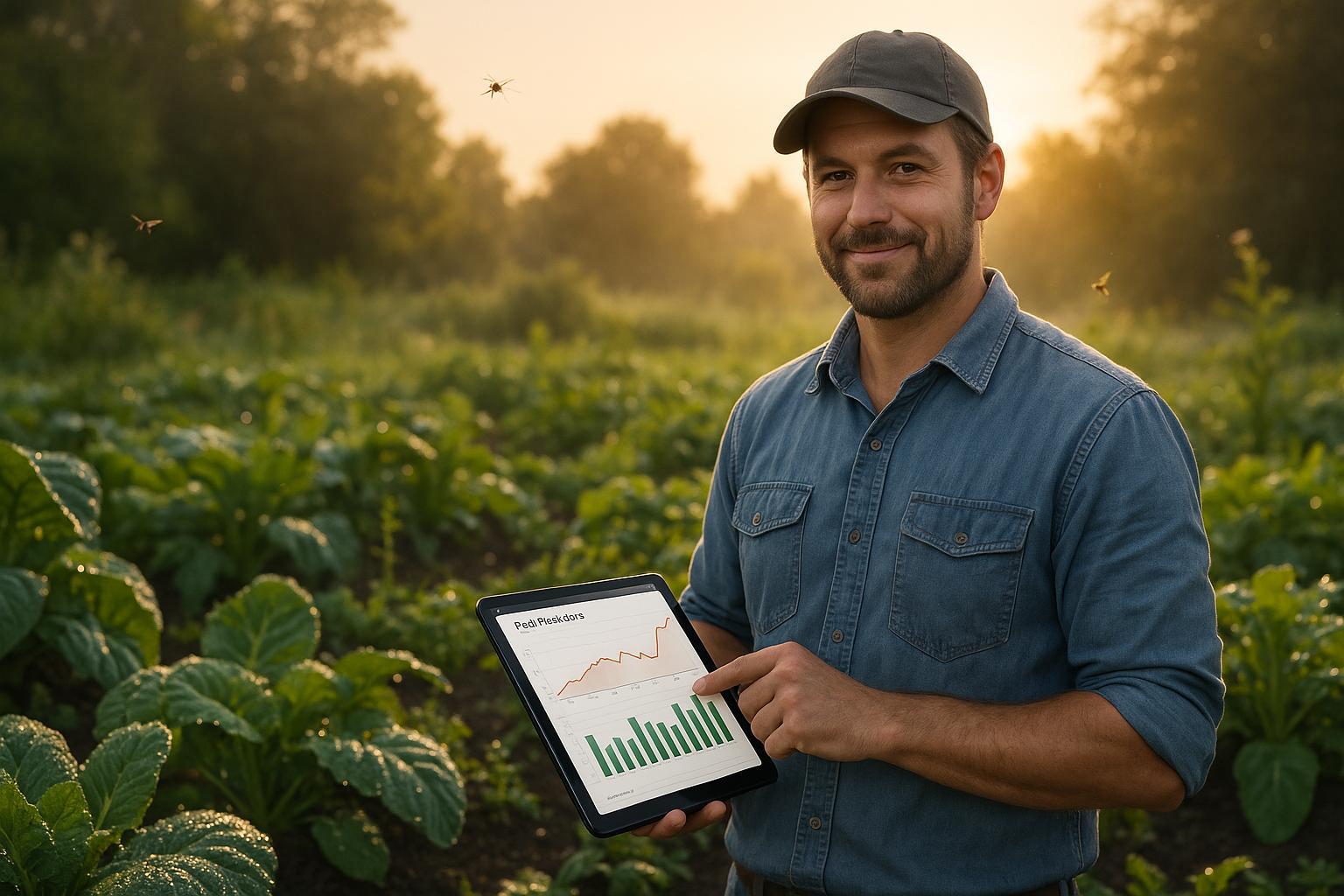
FAQs on AI Pest Prediction Models
Explore how AI pest prediction models revolutionize pest management, offering early detection, reduced pesticide use, and proactive gardening solutions.
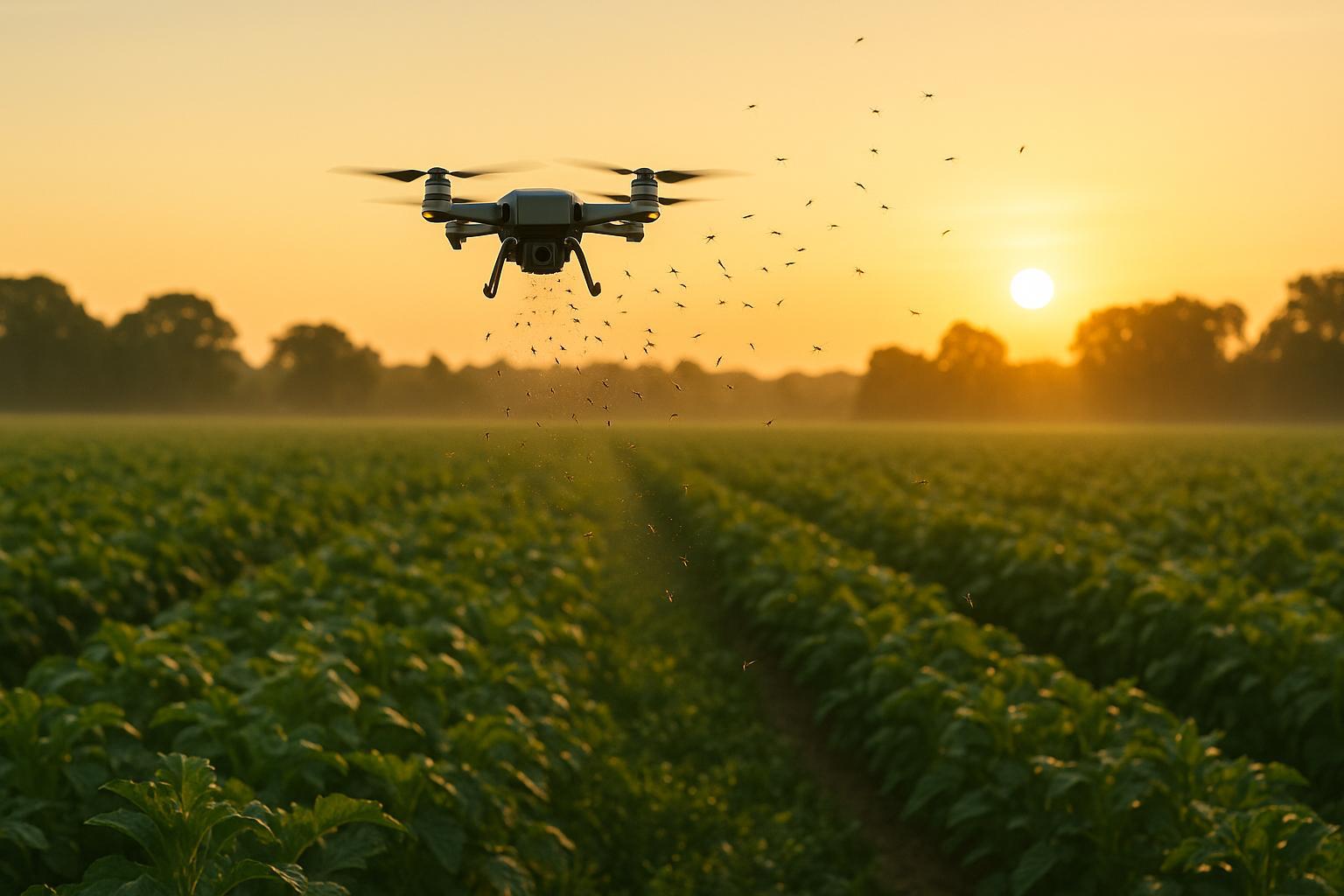
AI Timing for Parasitoid Releases
AI enhances the timing of parasitoid releases for pest control, improving effectiveness and reducing costs through data-driven insights.
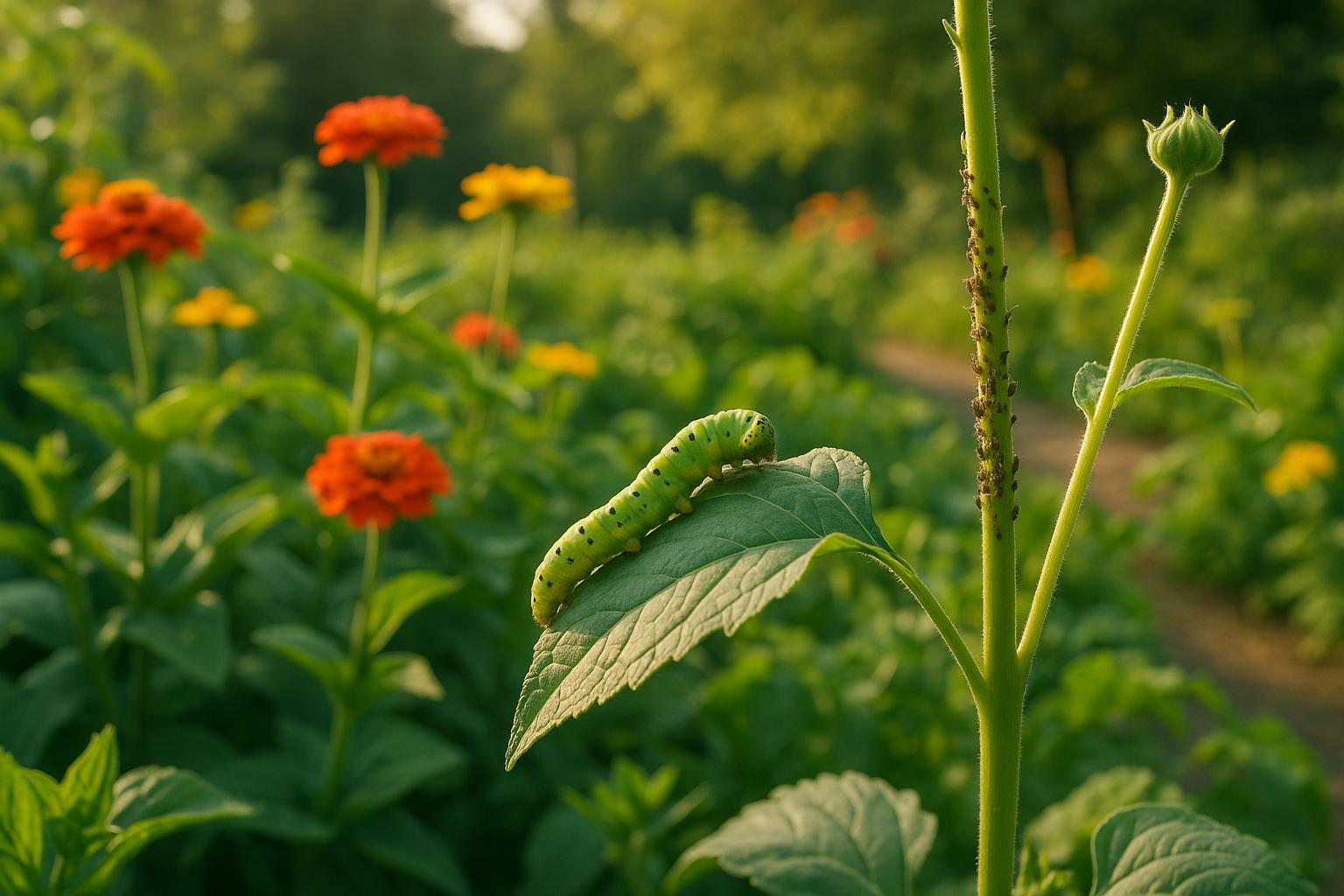
How Climate Affects Pest Risks in Gardens
Climate change is altering pest behaviors, leading to increased risks in gardens. Learn how to adapt and manage these challenges effectively.
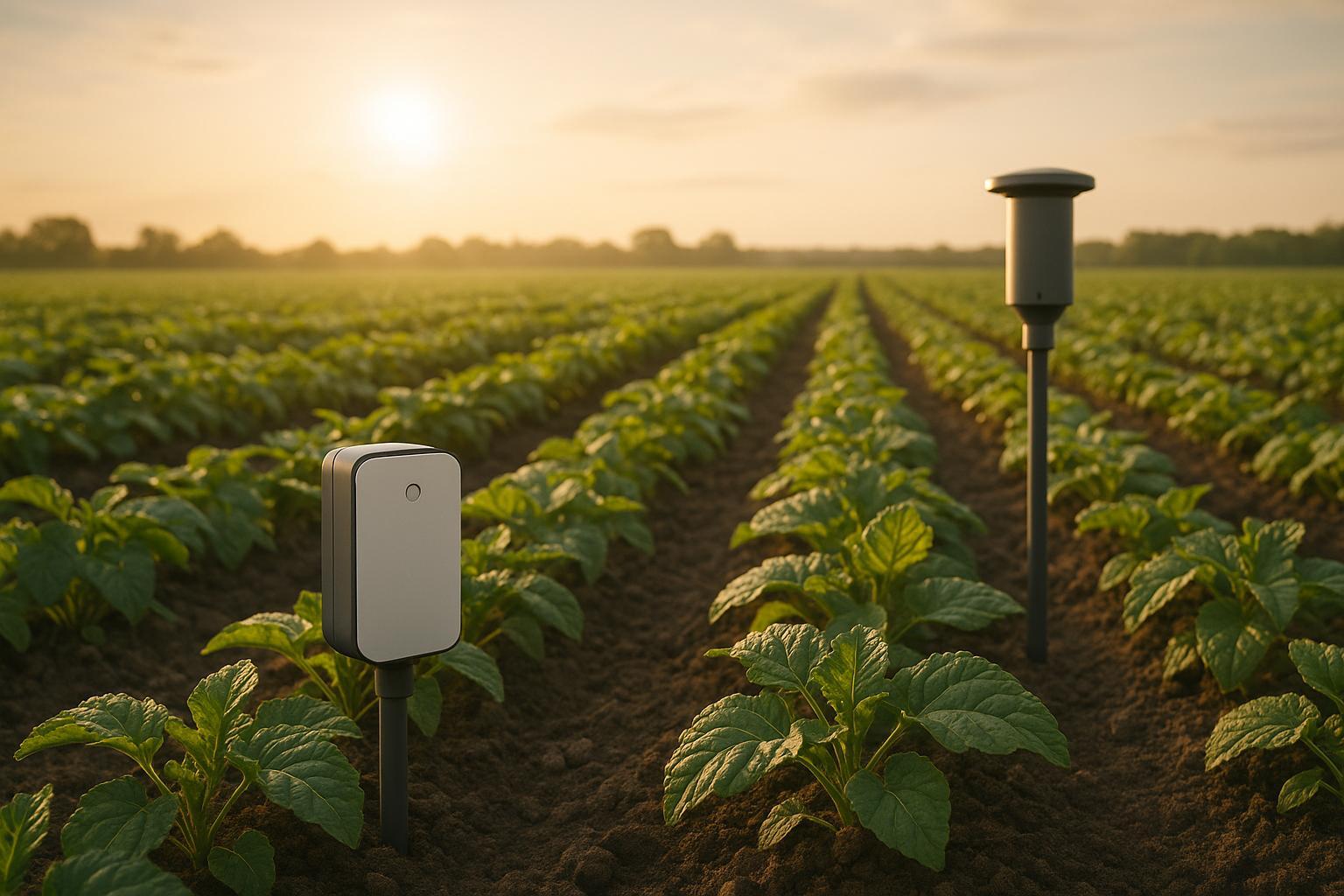
How AI Sensors Sync Data for Pest Control
Explore how AI sensors are revolutionizing pest control with real-time data syncing and precise detection for effective crop protection.

Small Vegetable Garden Layout Ideas: Maximizing Your Space for a Bountiful Harvest
Learn how to plan and design a successful small vegetable garden with our layout ideas. From choosing the right location to maximizing your space, we cover all the tips and tricks for a bountiful harvest.
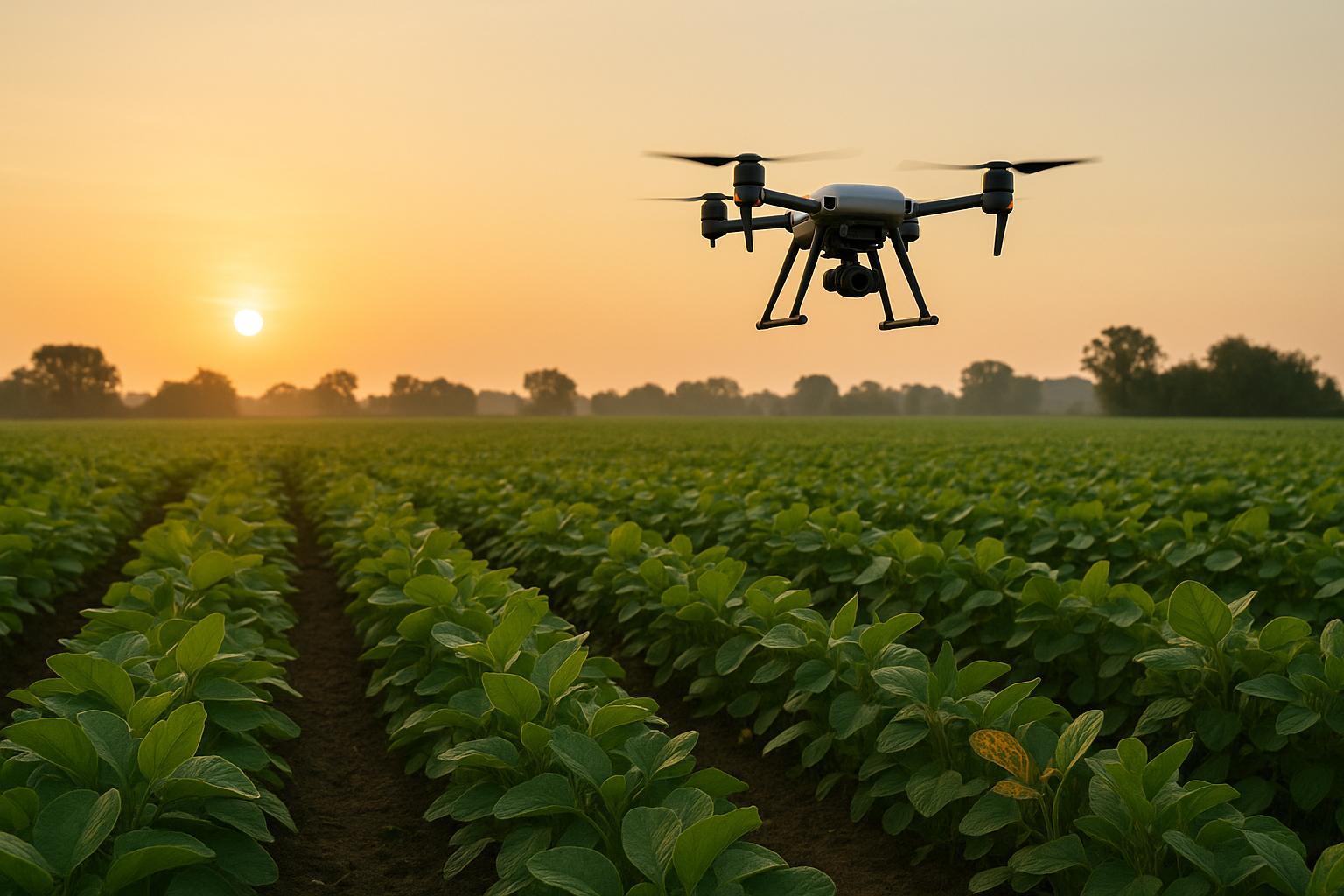
How AI Analyzes Drone Pest Data
AI-driven drones revolutionize pest management in agriculture by enabling early detection and precise treatment, enhancing crop health and sustainability.